In the adjoining figure, MNPQ and ABPQ are parallelogram and T is any point on the side BP. Prove that
(i) ar(MNPQ)=ar(ABPQ)
(ii)ar(△ATQ)=12ar(MNPQ).

Step by step video solution for In the adjoining figure, MNPQ and ABPQ are parallelogram and T is any point on the side BP. Prove that (i) ar(MNPQ)=ar(ABPQ) (ii) ar(triangleATQ)=(1)/(2)ar(MNPQ). by Maths experts to help you in doubts & scoring excellent marks in Class 9 exams.
Updated on:21/07/2023Topper's Solved these Questions
- AREAS OF PARALLELOGRAMS AND TRIANGLESBook:MTG IIT JEE FOUNDATIONChapter:AREAS OF PARALLELOGRAMS AND TRIANGLESExercise:NCERT SECTION ( EXERCISE 9.1)
Explore 1 Video
- AREAS OF PARALLELOGRAMS AND TRIANGLESBook:MTG IIT JEE FOUNDATIONChapter:AREAS OF PARALLELOGRAMS AND TRIANGLESExercise:NCERT SECTION ( EXERCISE 9.2)
Explore 7 Videos
- AREAS OF PARALLELOGRAMS AND TRIANGLESBook:MTG IIT JEE FOUNDATIONChapter:AREAS OF PARALLELOGRAMS AND TRIANGLESExercise:Olympiad/HOTS Corner
Explore 14 Videos
- CIRCLES Book:MTG IIT JEE FOUNDATIONChapter:CIRCLES Exercise:OLYMPIAD/HOTS CORNER
Explore 6 Videos
Similar Questions
Which of the following figures lie on the same base and between the same parallels. In such a case, write the common base and the two parallels.


View SolutionIn the given figure ABCD is a parallelogram, AE ⊥ DC and CF ⊥ AD. If AB = 16 cm, AE = 8 cm and CF = 10 cm,find AD.

View SolutionIn the given figure ABCD is a rectangle and all measurements are in centimeters. Find the area of the shaded region.
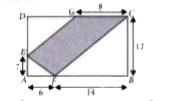
View SolutionABCD is a cyclic quadrilateral, if ∠BAC=60∘,∠BCA=20∘, then find the value of ∠ADC.
View SolutionIn Fig. 9.17, PQRS and ABRS are parallelograms and X is any point on side BR. Show that (i) ar(PQRS)=ar(ABRS)(ii) ar(AXS) =12ar(PQRS)

View SolutionDetermine the point of symmetry of a regular hexagon.
View SolutionMatch the following Column A to Column B

View SolutionThe inequation represented by the graph given below is :
View SolutionIn the given figure, PQRS is a parallelogram. A and B are the mid-point of ¯¯¯¯¯¯PQ and ¯¯¯¯¯SR respectively. If PS=BR, then the quadrilateral ADBC is a…………………… ,
ltimg src="https://d10lpgp6xz60nq.cloudfront.net/physics_images/PS_MATH_IX_C12_E05_020_Q01.png" width="80%"gt
View Solutionआकृति में, PQRS और ABRS समांतर चतुर्भुज है तथा X भुजा BR स्थित कोई बिंदु है। दर्शाइए कि
(i) ar(PQRS)=ar(ABRS)
(ii) ar(AXS)=12ar(PQRS)
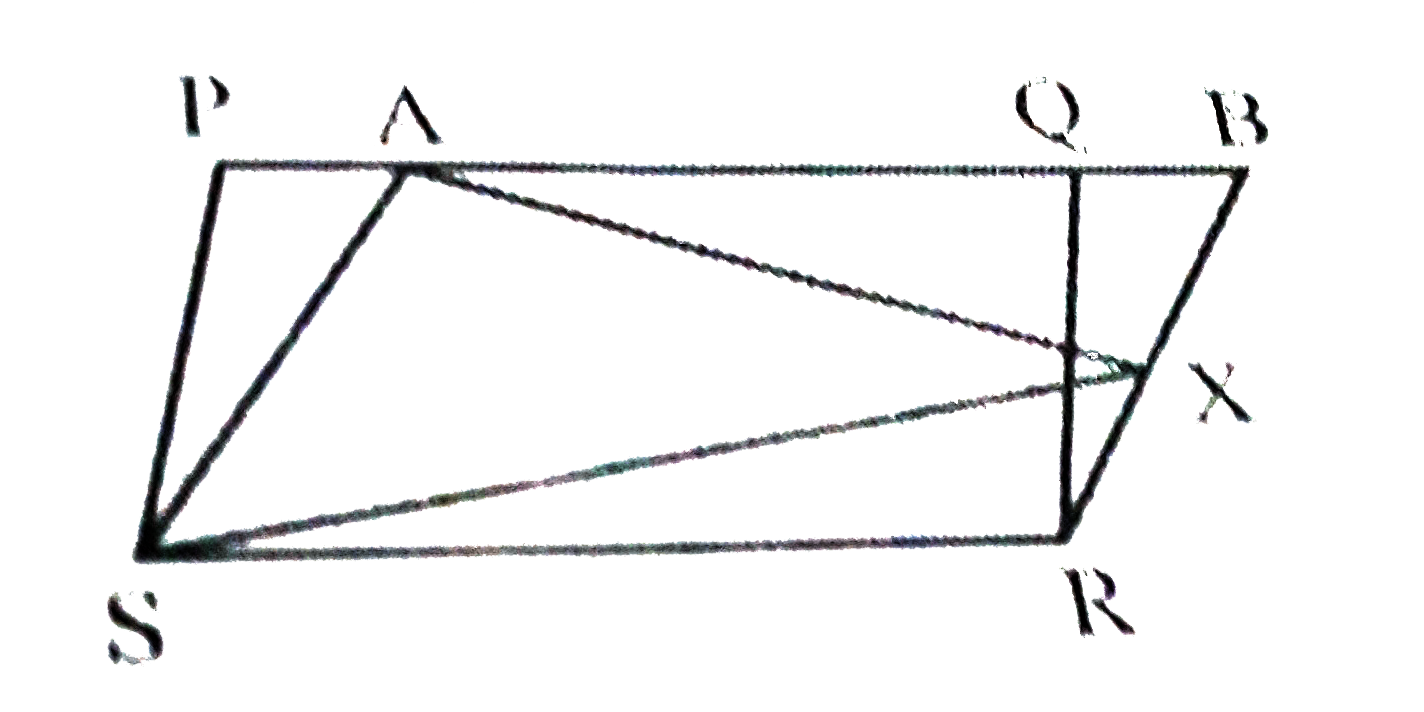
View SolutionIn the adjoining figure, ABCD is a parallelogram and P is any points on BC. Prove that
ar(△ABP)+ar(△DPC)=ar(△PDA).
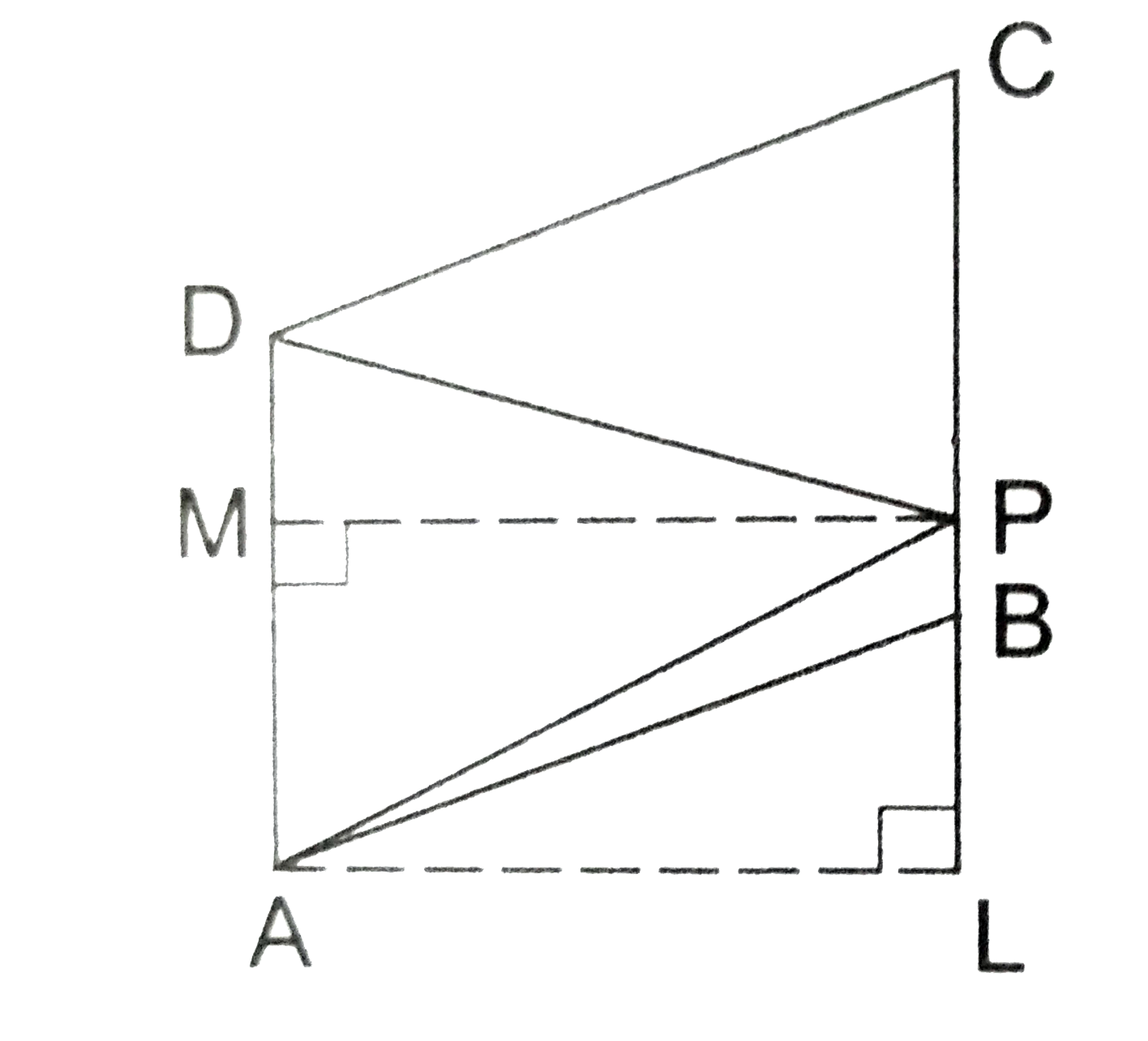
View SolutionIn the adjoining figure, MNPQ and ABPQ are parallelogram and T is any point on the side BP. Prove that
(i) ar(MNPQ)=ar(ABPQ)
(ii)ar(△ATQ)=12ar(MNPQ).

View Solutionचित्र में PQRS तथा ABRS समान्तर चतुर्भुज है तथा X भुजा BR पर स्थित कोई बिंदु है। दर्शाए कि
(i)ar(||gmPQRS)=ar(||gmABRS) (ii)ar(ΔAXS)=12ar(||gmPQRS)
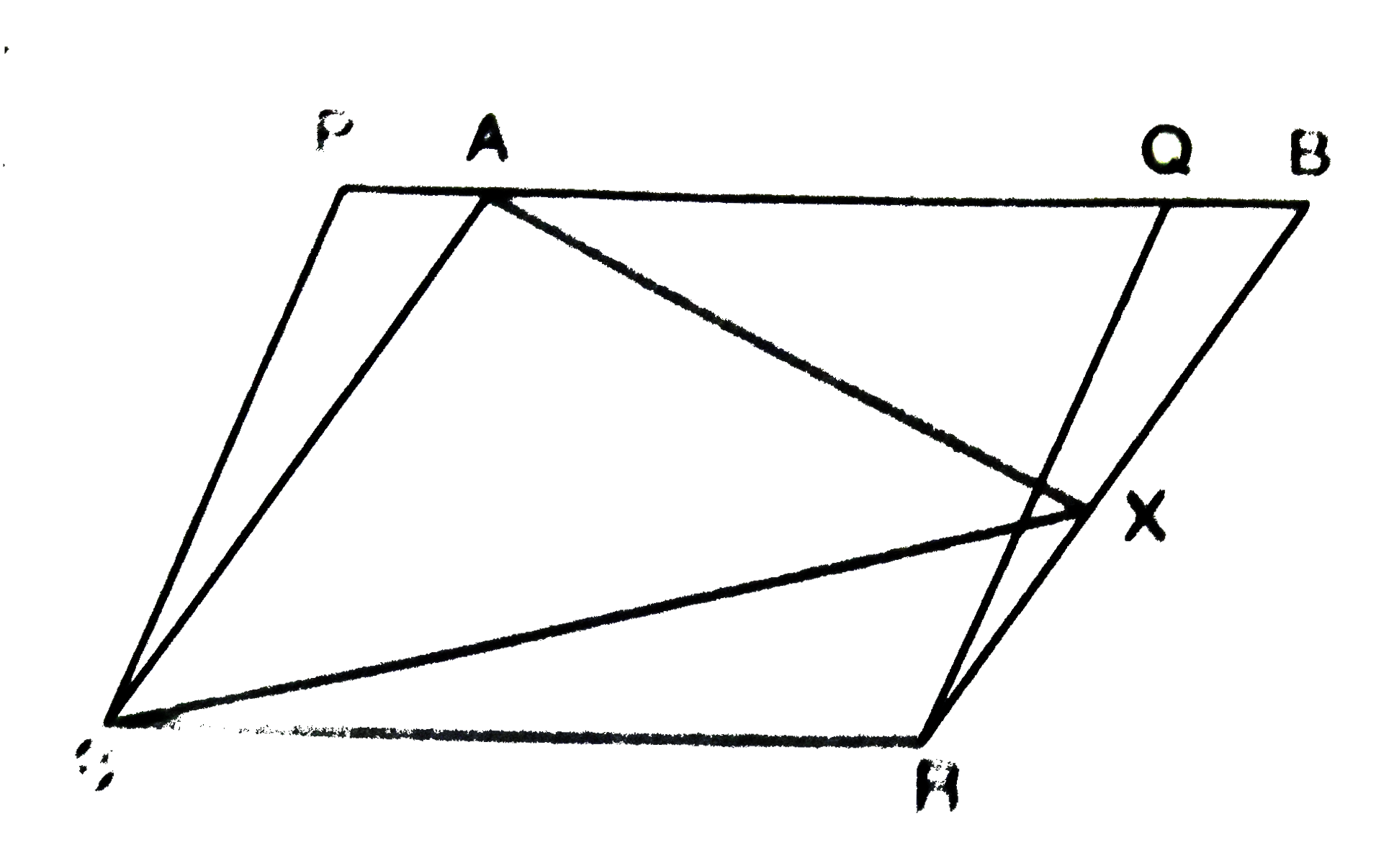
View SolutionIn, PQRS and ABRS are parallelograms and X is any point on side BR. Show that
ar (PQRS) = ar (ABRS)
as (AXS) = 12 ar (PQRS)
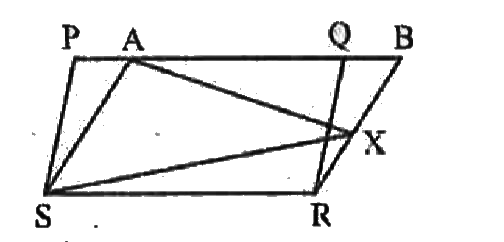
View SolutionIN given figure, PQRS and ABRS are parallelograms and X is any point
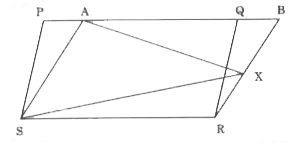
(i) ar (PQRS) = ar (ABRS)
(ii) ar (AXS) = 1/2 ar (PQRS)
View Solutionआकृति में PQRS और ABRS समांतर चतुर्भज है तथा x भुजा BR पर स्थित कोई बिंदु है। दर्शाइए कि
ar(AXS)=12ar(PQRS)
View Solution